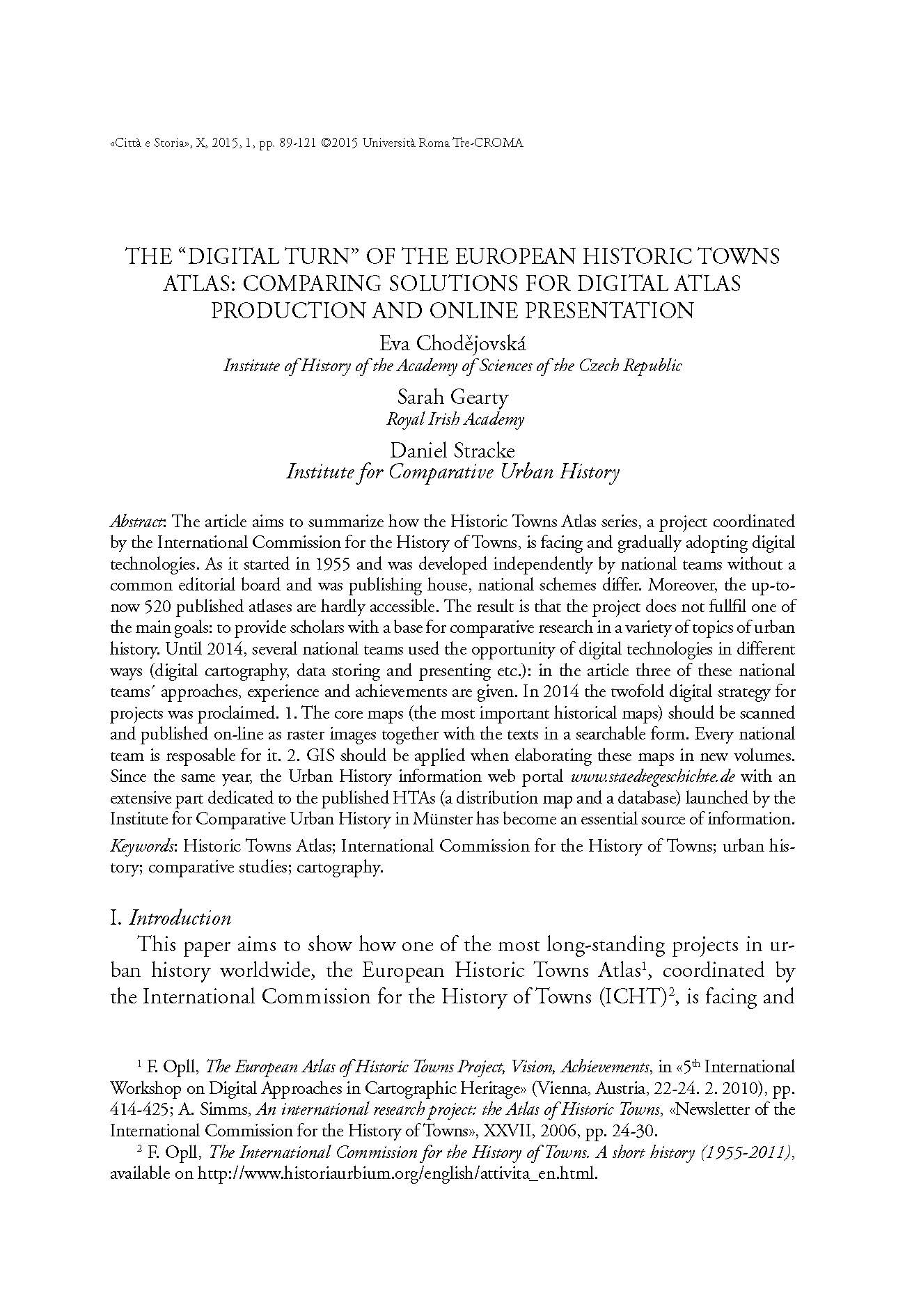The “Digital Turn” of the European Historic Towns Atlas: comparing solutions for digital atlas production and online presentation
6,00 €
The article aims to summarize how the Historic Towns Atlas series, a project coordinated by the International Commission for the History of Towns, is facing and gradually adopting digital technologies. As it started in 1955 and was developed independently by national teams without a common editorial board and was publishing house, national schemes differ. Moreover, the up-tonow 520 published atlases are hardly accessible. The result is that the project does not fullfil one of the main goals: to provide scholars with a base for comparative research in a variety of topics of urban history. Until 2014, several national teams used the opportunity of digital technologies in different ways (digital cartography, data storing and presenting etc.): in the article three of these national teams´ approaches, experience and achievements are given. In 2014 the twofold digital strategy for projects was proclaimed. 1. The core maps (the most important historical maps) should be scanned and published on-line as raster images together with the texts in a searchable form. Every national team is resposable for it. 2. GIS should be applied when elaborating these maps in new volumes. Since the same year, the Urban history information web portal www.staedtegeschichte.de with an extensive part dedicated to the published HTAs (a distribution map and a database) launched by the Institute for Comparative Urban History in Münster has become an essential source of information.
The article aims to summarize how the Historic Towns Atlas series, a project coordinated by the International Commission for the History of Towns, is facing and gradually adopting digital technologies. As it started in 1955 and was developed independently by national teams without a common editorial board and was publishing house, national schemes differ. Moreover, the up-tonow 520 published atlases are hardly accessible. The result is that the project does not fullfil one of the main goals: to provide scholars with a base for comparative research in a variety of topics of urban history. Until 2014, several national teams used the opportunity of digital technologies in different ways (digital cartography, data storing and presenting etc.): in the article three of these national teams´ approaches, experience and achievements are given. In 2014 the twofold digital strategy for projects was proclaimed. 1. The core maps (the most important historical maps) should be scanned and published on-line as raster images together with the texts in a searchable form. Every national team is resposable for it. 2. GIS should be applied when elaborating these maps in new volumes. Since the same year, the Urban history information web portal www.staedtegeschichte.de with an extensive part dedicated to the published HTAs (a distribution map and a database) launched by the Institute for Comparative Urban History in Münster has become an essential source of information.

